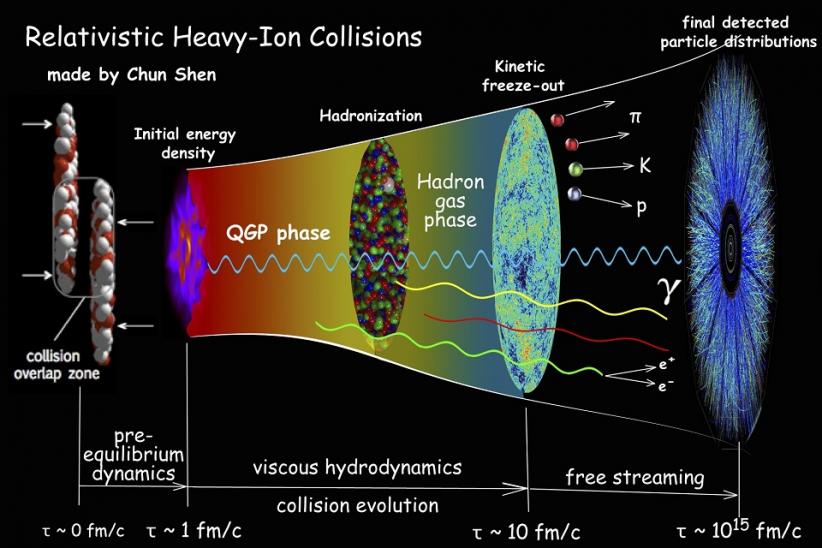Research on heavy ion collisions – a step towards understanding the evolution of the early universe
As part of the implementation of a research grant awarded in FWEiTE-1 competition, a team from the Faculty of Physics at the Warsaw University of Technology has undertaken research on the geometry and dynamics of heavy ion collisions utilising the correlation femtoscopy method, in close cooperation with scientists all over the world within STAR (RHIC), HADES (SIS-18) and CBM (SIS-100) experiments. In their work, researchers place special emphasis on the analysis of a phase diagram of quantum chromodynamics (QCD) in an area which still remains unexplored, i.e. heavy ion collisions, in so far untested range of collision energies amounting to a few or a few dozen giga electron volts (GeV).
Correlation femtoscopy, which facilitates measurement of a particle correlation in the field of low relative velocities, is still a developing field of science, and as a research tool it is extensively utilised in hadron and heavy ion physics. For this reason, femtoscopic measurements have been included in research programmes in the biggest experiments involving heavy ion collisions for years, including STAR and ALICE, in which WUT researchers participate as well.
In the latest findings of the research conducted by Professor Hanna Zbroszczyk’s team as part of the FWEiTE-1 research grant, it was proved that the size of the source in the proton-antiproton correlation for the same centrality classes is heavily dependent upon the centrality of collisions (in the case of more central collisions a bigger source is created, which implies a weaker correlation signal; however, in the case of more peripheral collisions, a smaller source and stronger correlation are recorded). The correlation effect (the width and size of the correlation function) is inversely proportional to the size of the source. The rays of the source also depend on the energy of the collision. If the energy of the collision is higher, a bigger source and weaker correlation are registered.
Researchers managed to test the collision dynamic with the correlation femtoscopy method, but it was possible only when solely non-identical combinations of particles were tested. ‘It is possible to test a sequence of emissions in the case of distinguishable particles. The collision dynamic may be associated with temporal and spatial aspects,’ says Professor Hanna Zbroszczyk. ‘The femtoscopy method is sensitive to emission asymmetries connected with spatial shifts and to time gaps between the emissions of two different particles,’ she explains. However, she adds that it is not possible to differentiate whether spatial and/or temporal asymmetry is inferred.
Although research is still in progress, researchers hope that their work will help to pave new directions in the field of nuclear physics thanks to making direct references to the first moments of the evolution of the Universe in research findings.
Research team:
Hanna Zbroszczyk, Prof. Ph.D., D.Sc.; Paweł Szymanski, M.Sc.; Maria Stefaniak, M.Sc.; Diana Pawłowska, M.Sc.
Source:


